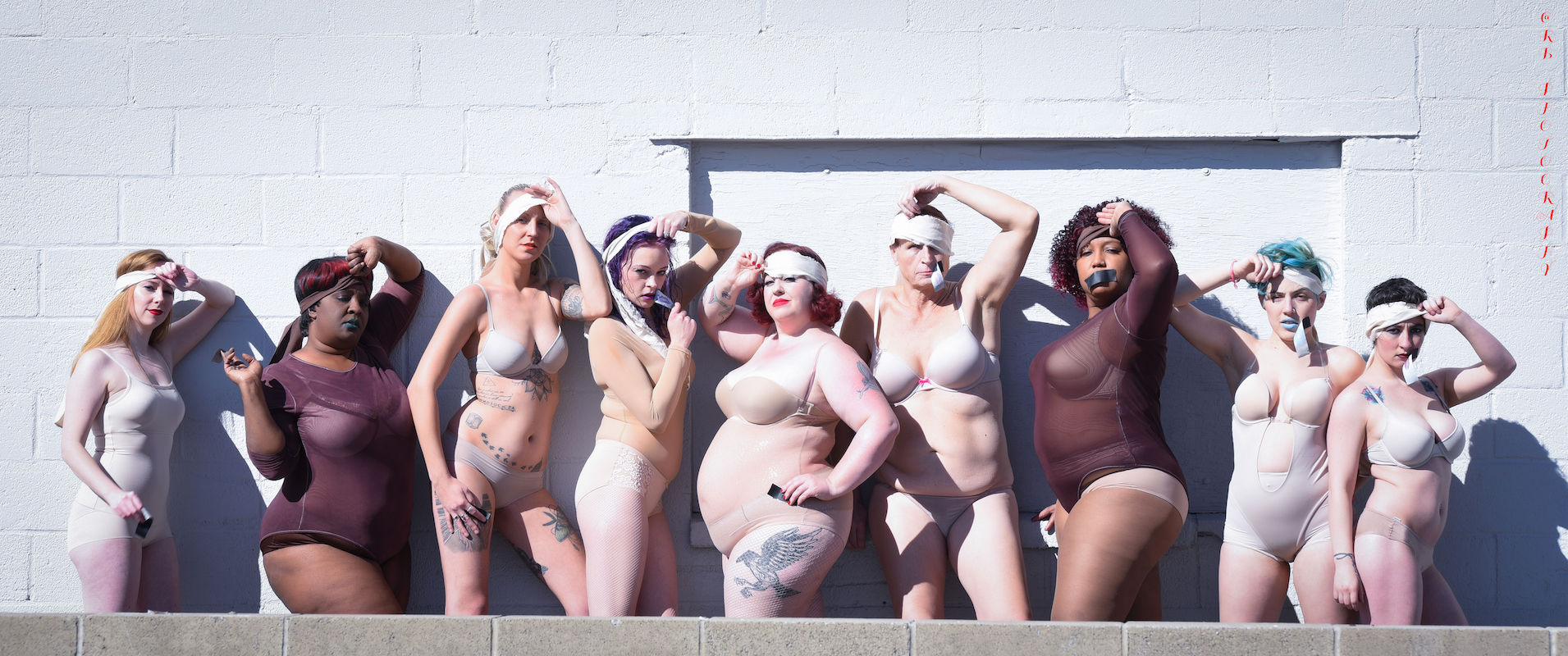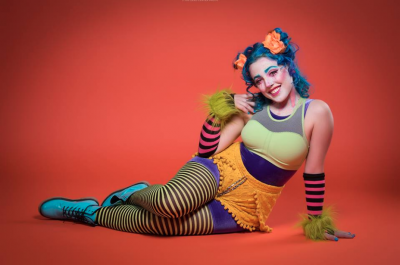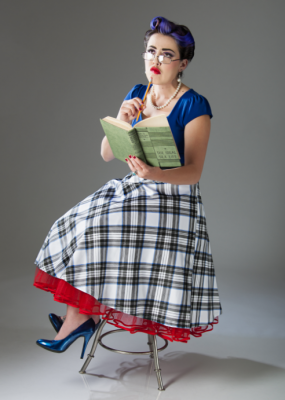
The Burlesque Barriers: An Interview with Madazon Can-Can
Art
Whether it is three-inch heels or clown shoes, performance artist Madazon Can-Can has her feet dancing. Burlesque is Madazon’s primary form of performance art, but she has myriad other talents as well. You may come across her performing as a puppeteer, clown, singer or teacher—her talents know no limits, including educating the community on burlesque. She teaches classes on its history, movement and empowerment. The classes are radically inclusive, and individuals are invited to participate regardless of gender identity. (I suggest that if you do take one of these classes, be serious and ready to learn, because Madazon will ask you what your reason is for being there.)

The Utah Vaudeville and Burlesque Collective (UVBC) is one of the performance groups that Madazon belongs to in the valley. It boasts 44 in-state burlesque performers, but the number of active participants is closer to 12 to 18. The UVBC is always actively looking for performers to add to the group, and as an open minded group, they are also looking for “boylesque” performers. In the vaudeville category, they have performers like magicians, belly dancers, jugglers, stilt walkers, puppeteers, clowns and comedians. If you have a strange and unusual talent, I bet they have a place for you. Do not be shy—contact them and share your art with the world.
Madazon faces many challenges with her burlesque performances, particularly because Utah still has “blue laws.” Blue laws only allow performers to strip down to pasties and a G-string in certain environments: It has to be a private show, involving no alcohol, and can never be performed in a public space. Primarily, burlesque shows are put on in bars, so they add significant limitations on the performers. Madazon feels that theaters here are “terrified by burlesque” because people do not know what to expect from the artform, and that may be one of the reasons why it is not allowed.
It seems that there is a stigma over these performance artists as many people do not want to recognize them as artists. Madazon feels that there is a need to train the audience into recognizing and appreciating burlesque as art. Stripping does fall under the same umbrella as burlesque, and while Madazon has no problems with “strippers,” she says it’s different. Obtaining a sexually oriented business (SOB) license may allow burlesque performers to properly express their talents, but Utah SOB laws make it difficult for the performances to happen and limit venues. “We [burlesque artists] are performance artists, and we should be seen that way,” says Madazon. “We should not have to obtain a license to do what we want to do. We are different—we are in the same vein because we are both stripteasing, but burlesque is different.” If you watch a burlesque performance, you may notice that there is more to the costumes and the movements are rehearsed. It takes hours of practice to develop burlesque acts, says Madazon. “[Burlesque] has a long history in the theater world and vaudeville world that is not being recognized.”

In addition to educating the community on burlesque, Madazon also teaches visual art—painting, drawing and sculpture—to elementary students. However, at the end of this year, she is moving on from teaching due to issues concerning pay, censorship and her sense of inability to speak her mind. Madazon teaches in a conservative community. When she presented the idea of studying another culture, or of teaching mindfulness, the community said no. They stressed the point that church and state needed to stay separate and that the teaching was too close to Buddhism. “This is not about religion,” says Madazon. “This is not about Buddhism. This is about thinking about your thoughts, literally self-monitoring—a skillset that they do not want me to teach because they do not know what it is.” It is incredibly hard to teach things like mindfulness, and Madazon stresses its importance as something that children need in order to develop their interpersonal skills: communicating with one another and handling their emotions. Knowing that there are others teaching mindfulness in the Salt Lake Valley, Madazon wanted to bring those teachings to her smaller community, so she attained her certification—but the school district shut her down.
Madazon pushes for freedom of thought and anti-censorship, so it is no surprise that she became involved in the Exotic Kitty mural incident. The South Salt Lake City Arts Council prevented the creation of a mural that depicted a woman with a teasing shoulder. That set off the burlesque community, because burlesque is a performance about the tease. When the council was questioned, they said that the colors of the mural could not be pink and purple and, instead, must be earth tones. Madazon reached out to understand more about their reasoning, but the council declined. When she asked about the meeting times, she was also denied information. “I felt as if I was yelling into the dark,” Madazon says. She gathered the troops to make artwork and protest the censorship, and it caused a stir. They dressed in skin-colored bodysuits and blindfolds to define unity, adding tape across their mouths to depict how they feel sexuality is shunned in our valley. The city did not want to hear their thoughts outright, so they found an expressive way to make their voices and opinions known. At this stage, nothing has changed with regard to the artwork on the outside of the Exotic Kitty. It is still banned. “The Mural Festival will be interesting considering that all murals from now on have to be in ‘earth tones,’” says Madazon. “As for responsibility of the decision, it seems that the South Salt Lake City Arts Council is not in charge of making this type of choice for the community, and they are still refusing to comment.”
As a performer, Madazon enjoys being near people and being accessible so that she may feed off of their vibes and energy. She notes that she sometimes struggles with large stage shows when she is not in direct contact with her audience. She doesn’t like being a part of something so far away where people can’t see her, and she does not want to present herself as being untouchable. In a similar vein, Madazon understands that communal effort and volunteering are key to helping any community meet its goals, and she gives her energy back to the public through various charity projects. She models and donates prints, performs for the deaf and blind community, and this year, she already helped the “burner” community and Mark Hammond’s Solar Bee project, as well as donating her time and performances to start the fundraising for Utah’s regional Burning Man, Element 11. From engaging in community advocacy to teaching to creating her own work, Madazon uplifts those artforms that foster a thread and a connection with people.
Be sure to catch Madazon during her weekly Thursday night Burly-Oke, which is burlesque and karaoke at Prohibition. Madazon will also performing at the 2018 Utah BurlyPicks Regional event at Metro Music Hall on June 13, hosted by none other than Miss Gay Utah XXXVI and Miss Gay Central States America Gia Bianca Stephens. It is going to be an evening filled with some exquisite performances. Dress your best and be prepared to see what burlesque is with some of the best entertainers in the business.